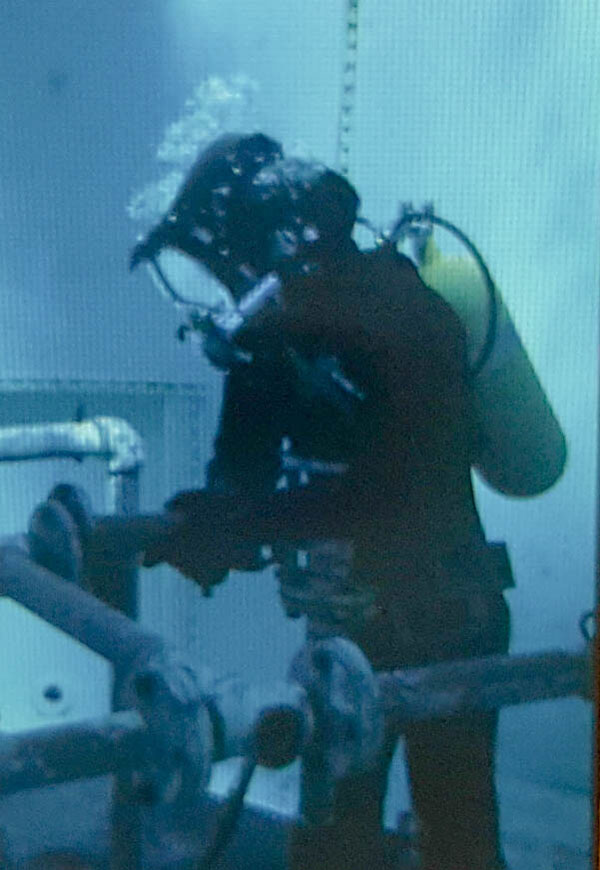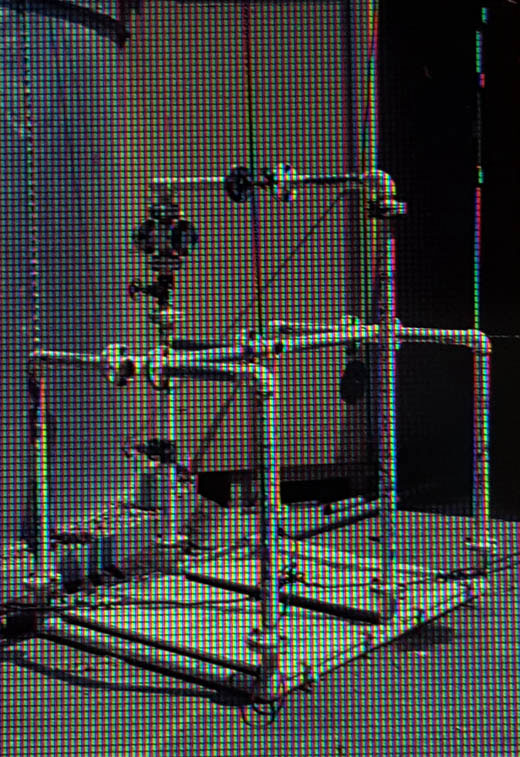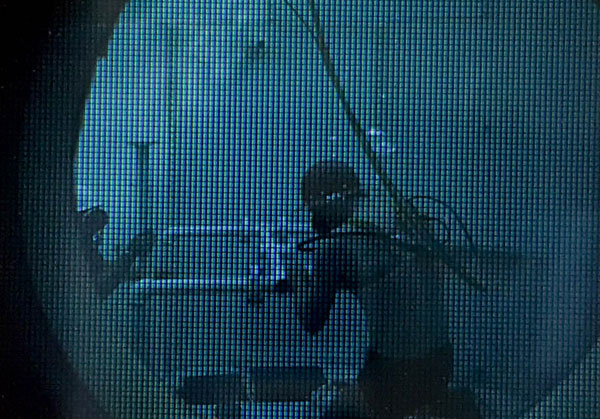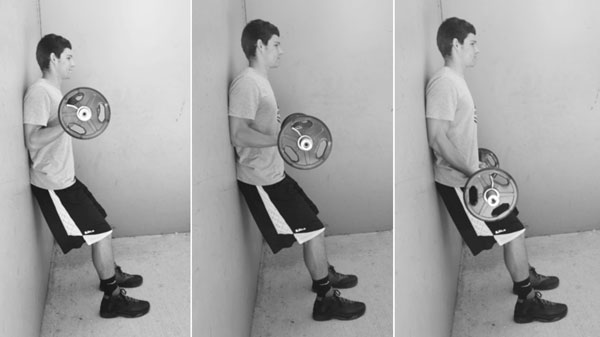“In the context in which I view fitness for diving it becomes necessary to
develop strength in those movements that contain the identical elements
in the exercise program that are present in the activity.”
– Glen Egstrom, Ph.D. FACSM
I became a Specifist in the early 1950s. I became a proponent of the axiom that people make highly specific adaptations to the demands of their environment. As a Specifist I began to study the barriers to improved performance in, on and under the water. These barriers include methodology of diving and underwater work, the impact of biomechanical problems brought on by diving equipment and tools as well as changing environmental conditions. The specific physiologic and psychologic fitness requirements for diving were also studied in very focused ways in the underwater environment.
Story by Glen Egstrom, Ph.D. FACSM with Gretchen M. Ashton, CFT, SFT, SFN, SSC, NBFE
I was fortunate to have met Dr. Gershon Weltman, a UCLA Human Factors Engineer and his talented grad student, soon to be Dr. Tony Christianson, in the late 1950’s. We worked as a team for years and found support from the Office of Naval Research for some of our projects. Dr. Christianson has become a prolific inventor of rock climbing and skin and scuba diving equipment while Dr. Weltman continued in his human Factors studies.
Upon becoming a certified diver and being a physical educator specializing in biomechanics at the time, we recognized that there was little or no validating research supporting many of the safety practices that were being promoted in the quest of improving diving safety. For example, at that time we were all taught to tow an inner tube as personal floatation. The practice created more problems for the diver than it solved. Issues such as getting tangled in the towline or kelp or getting caught on underwater obstacles during a dive were not unusual and increased risk on many dives.
Our group began cataloging the nature of the specific adaptations needed to overcome problems encountered while performing underwater tasks, which in turn caused us to focus on the biomechanical, physiologic, methodologic and psychologic aspects of diving under the specific conditions that were imposed by the various projects in the various underwater environments. To that end, we began accumulating data on a wide variety of specific diving activities, i.e. Skin Diving, Hookah Diving, Scuba Diving, Hard Hat Diving, and 1 ATM dive systems.
We began examining the methodology that was used and focused upon the basic premise of the instructions that were currently being given to students in dive training. At that time, the basis for selecting a procedure in the recreational, scientific and commercial communities was largely based upon the U.S. Navy Diving manual and other Navy training films and studies. There were very few resources that could be found which provided data for supporting recreational diving practices. The work of individuals associated with Los Angeles County, the YMCA and NAUI was in its infancy and supported by leaders who passed along their experiences for others to follow.
One of the early studies that was conducted in the UCLA Kinesiology Department that had a specific impact involved determining how strength was developed and how it was applied in diving. In one of our experiments we determined that strength is developed at that point in the range of motion where the resistance is applied. If you apply higher resistance when the muscle is relatively long that is the point where the strength is developed. If you apply the resistance when the muscle is shortening it will develop the most strength at that point. It becomes necessary to evaluate the general kinesiology of the activity that you are trying to improve. The purpose of the analysis is to determine at what point(s) in the range of motion you need to develop strength for the specific activity.
In the context in which I view fitness for diving it becomes necessary to develop strength in those movements that contain the identical elements in the exercise program that are present in the activity. This includes rate, duration and intensity of the muscle action. A failure to use the identical elements can lead to a common error. This error is found in the gymnasia of the world in which the people who use the exercise equipment are in fact doing appropriate exercises to improve on the use of the equipment, but may or may not have any effective value on changing the behavior in the selected activity.
Over the course of a few years, we developed exercise devices that came about as the result of the biomechanical analysis. Among these devices were a variety of ergometers, and ultimately a device called a pipe puzzle which was designed for underwater use by hard hat divers. The device comprised subtasks such as wrenches to tighten or loosen various sections of the puzzle. When fully assembled, it was pressurized and inspected for leaky joints that would indicate insufficient tightening. The incorporation of subtasks within the overall completion of the puzzle were drawn from the type of work done by hard hat divers. The pipe puzzle was ultimately used in preparation for its use on Sea Lab III. But it was also used off Navy vessels in places like Honolulu Harbor.
One of the issues involved applying torque sufficient to seal the flanges of the puzzle so they would not leak. If a working diver were to stand by the puzzle and put a 36” long torque wrench on the one-half inch bolt, as he would apply torque on the bolt, he would find himself rising in the water column. It became necessary to develop techniques that would permit the diver to apply counter pressure on the wrench and remain stationary. For this specific task, one successful technique was grasping the handle of the torque wrench and then reaching across the puzzle to grasp a section of the pipe puzzle that was 180 degrees to the handle of the torque wrench. Using a different position required that strength be developed in the muscles that were functionally involved in applying the torque. For example, the development of grip strength and the development of the flexors of elbows and wrists, adduction of the shoulder joints, and rotation of the scapula. The key is to apply the resistance at the point in the range of motion where the greatest resistant is met. This translates into very specific physical training.
Another issue was involved in the handling of the diver’s umbilical. It was necessary to maintain extra vigilance to avoid trapping the hose inside the pipe puzzle. Although this is an accomplished skill early in the divers’ training we noticed specificity became an issue and skills learned on other tasks were not easily translated to this new task.
We had a problem on the Sea Lab with one of the Navy exercises. They had a surface supplied umbilical hundreds of feet in length and the friction of the hoses against the sand and rocks created resistance that became harder and harder to overcome. One of our solutions was to anchor the umbilical at increments of its length. The diver then only had to manage the remaining feet of untethered umbilical at a time. The diver had to turn and face the umbilical, lean backwards and push with their feet.
Story by Glen Egstrom, Ph.D. FACSM with Gretchen M. Ashton, CFT, SFT, SFN, SSC, NBFE
Sometime after we had finished with the pipe puzzle, we received a message that an engineer from Russia had put a pipe puzzle into the Black Sea with only slight differences. He used ½” pipe instead of 2” pipe, small flanges and bolts, did not do a pressure test and they felt that they had duplicated the pipe puzzle. My response was that they had broken new ground with their pipe puzzle since it had few if any of the characteristics we had used and that the data would not be comparable.
For a short time, the pipe puzzle became a standardized work test task for public safety divers, commercial divers and military divers. The identical elements of the pipe puzzle were tool handling techniques for installing and torqueing bolts and flanges underwater for ship repair and dam construction.
21s for Bicep Strength and Diving
Gretchen M. Ashton, CFT, SFT, SFN, SSC, NBFE
One exercise that demonstrates and develops strength emulating what is required in applying torque to complete the pipe puzzle is the 21s Biceps Curl. Performing the 21s Biceps Curl with free weights helps develop specific strength at three points in the range of motion and contraction of the biceps of the upper arm, muscles of the forearm and hand, and the muscles of the shoulder and around the shoulder blade.
Biceps muscles in the upper arm are primary in flexing the elbow. Biceps muscles are assisted by muscles in the forearm, some of which are flexors of the wrist, and connect the chain of muscle and bone with the muscles responsible for curling the hand and fingers. The deltoid muscle in the shoulder and muscles around the shoulder blade (scapula) work as stabilizers during the movement. The bigger the circumference of the handle (dumbbell or bar) the more grip strength is developed. Recreational divers can benefit by applying specificity training concepts by performing the 21s Biceps Curl. The exercise helps develop strength for gripping and holding on while climbing boat ladders, using a line in rough conditions while waiting to board a boat, assisting another diver with gear or rescue above or below the surface, hauling and lifting dive and camera gear, and overall upper body strength for all diving activities.
Proper Form
Standing with feet about hip width apart slightly flex the knees, contract the abdominals and buttocks, and tuck the shoulder blades down and toward center.
 The EZ bar is held on an angle for comfort and proper biomechanics with the thumbs always higher than the smallest finger when at the top of the curl. Leaning against a wall isolates the exercise, helps maintain form, and for some, makes it feel more difficult. Keep elbows alongside the torso throughout the curl. For most divers, the range of motion will be complete before the bar gets to the chest. If the elbow is pulling forward, this means the movement has gone too far, the biceps are beyond contraction and the final few inches comes from shoulder movement. Inhale before starting the exercise and exhale while lifting the weights.
The EZ bar is held on an angle for comfort and proper biomechanics with the thumbs always higher than the smallest finger when at the top of the curl. Leaning against a wall isolates the exercise, helps maintain form, and for some, makes it feel more difficult. Keep elbows alongside the torso throughout the curl. For most divers, the range of motion will be complete before the bar gets to the chest. If the elbow is pulling forward, this means the movement has gone too far, the biceps are beyond contraction and the final few inches comes from shoulder movement. Inhale before starting the exercise and exhale while lifting the weights.
Sets, Range of Motion, and Repetitions
Perform four sets of 21 repetitions with seven repetitions in the top half range of motion, seven in full range of motion and seven in the bottom half range of motion. Rest for 30 to 60 seconds between sets depending on the amount of weight used and perceived exertion. Precaution: Keep the wrists curled. DO NOT allow the wrist to relax back or extend especially under the weight of the bar.
Fitness Model: Payson Crawford




